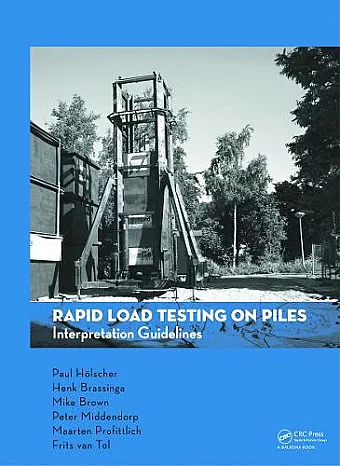Rapid Load Testing on Piles
Interpretation Guidelines
Michael Brown author Paul Holscher author Frits A van Tol author Henk Brassinga author Peter Middendorp author Maarten Profittlich author
Format:Hardback
Publisher:Taylor & Francis Ltd
Published:14th Oct '11
Currently unavailable, and unfortunately no date known when it will be back
This hardback is available in another edition too:
- Paperback£75.99(9781138113770)

A Rapid Load Test (RLT), developed to determine the initial stiffness and bearing capacity, is an economical and practical alternative to a Static Load Test (SLT). The broad application of RLT, however, was hampered by uncertainty about the interpretation of the test results. This book offers clear guidance on the available analysis techniques and their reliability.
The guidelines were related to an international standard that is drawn up by CEN and can be used in two ways:
- Straightforward interpretation of test results, chapters 1-3
- Interpretation with additional background information about the possibilities and limitations, chapters 4-8
The guidelines were drawn up by the Dutch CUR-committee on rapid load testing on piles.
Chapters 1 and 2 deal with the practical execution of the test and the presentation of the results. Chapter 3 gives a general overview of existing interpretation methods and refers to step-by-step descriptions of the two advised interpretation methods.
The aspects that are important for the interpretation are discussed in chapter 4, also showing that the inertia of the pile should be taken into account. In clay soil the rate effect (the dependency of strength and stiffness on loading rate) is also of importance, whereas in sand and silt the generation of pore water pressures during an RLT plays a role. The velocity of the RLT is such that the reaction of sand and silt might be considered as partially drained. These guidelines indicate how these effects can be compensated to obtain the static resistance in the final results.
Chapter 5 presents two interpretation methods (a method for piles in sand, gravel, silt and piles on rock and a method for piles in clay). For practical use, the methods are described in a step-by-step scheme in an appendix.
ISBN: 9780415695206
Dimensions: unknown
Weight: 362g
106 pages